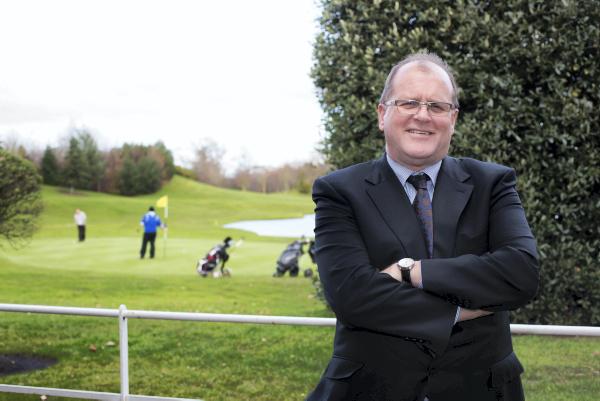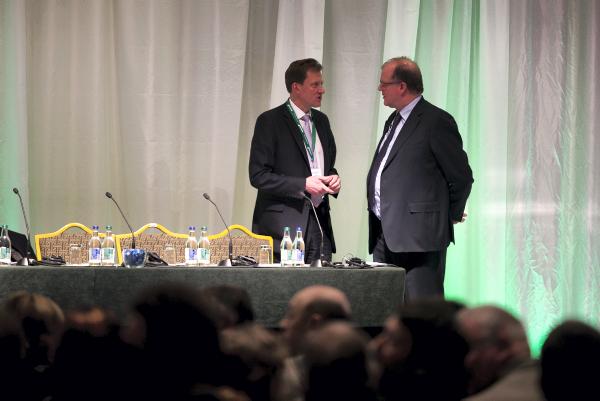The international translators at the Keenan conference illustrated the impact 30,000 Keenan diet feeders have around the world. Farmers from all over were in Ireland to celebrate 30 years since the release of the first Keenan mixer wagon.
Two weeks earlier, I found myself in the foothills of Mount Leinster in Borris, Co Carlow, to find out how a company with roots in shed-building ends up exporting to over 50 countries.
Gerard Keenan, company chairman, walked me through the plant and its history. Their story goes back as far as the 1960s, when farmer, engineer and innovator Richard Keenan wanted to develop a “reliable machine capable of handling the toughest feeding ingredients”.
Since then, the award-winning company has gone on to become one of Ireland’s largest machinery exporters. The company’s success is based around its reputation for service and the long life and reliability of the Keenan mixer wagon itself.
Today, the company sells a third of its machines in France, a third in Britain and Ireland, and the balance in other countries including Denmark, Sweden, Germany, Holland and Australia.
Keenan has become an international brand. With managing director Jim Greene driving the wagon, it employs 230 people – of whom 70 are based abroad. A total of 4,500 Irish farmers feed their cows with a Keenan.
In 2003, Keenan embarked on a project to transform the business. It began to measure feed intakes and outputs and it now has the largest feed efficiency database, with over 10,000 dairy farms in 25 countries, according the Gerard.
From work it conducted on farms in the USA in the late 90s, the company developed best mixing practices depending on the forages and feeds used. The outcome from this was the development of the Mech-Fibre mix.
Gerard sees the future through collaboration between farmer, feed company and Keenan, to develop an efficient supply chain. He wants to move the model from a labour-saving machine to a profit-making system.
Keenan has built relationships with feed companies in France through Glon Sanders where sales of wagons have grown by 40% in recent years. The company hopes to build on this with inTouch, opening a global data centre in Kilkenny to provide nutrition performance monitoring and customer support.
The smart box, which is also available to non-Keenan mixer wagons, remotely monitors feed performance on a farm. Feed specialists are alerted to changes and offer advice to help the farm achieve its targets. Keenan is working with Dairygold and hopes to roll out the service to other feed suppliers.
One of the challenges for Keenan in recent years has been volatility. Gerard says that it affects profitability on two levels; as commodity buyers of steel where it is difficult to get the price back in the market place and on demand. Selling capital equipment has become more difficult since the financial crisis as people have moved to a different plane of confidence.
Automated feeders
He believes that the future Irish cow will be grass-based, averaging 7,000 litres on 1,000kg of concentrate. While Gerard admits that the tub feeder market has grown in recent years, he is committed to the Keenan system. He envisages more of a future where feeders become static and fully automated on large dairy farms – even in Ireland.
When asked why the company have continued to manufacture in a high-cost economy like Ireland, Gerard explains that it is a complex business that depends on quality and productivity. He believes in committing in the long term, stating that “because we are a high cost economy, we must invest in innovation and we cannot compete on price at a global level’’.
Keenan is investing heavily in the business, with around 9% of turnover invested per annum in science, innovation and people in recent years.
The latest set of available accounts is for 2011. When asked, Gerard Keenan explains that this is due to a change in financing arrangements. 2011 saw the group return to profitability with good sales growth. EBITA rose to €2.1m in 2011, up from €0.5m in 2010. Revenue at €48m in 2011 was up 13% on 2010.
The overheads in 2011 increased by €1.7, and are attributed to the continued investment in innovation and technological development. The group envisaged that overheads would reduce after this investment.
Gerard says: ‘It’s important to stress that our company’s long-term growth strategy is based on a feeding technology and support programme.’’
And with the company shifting its business model from machinery-led manufacturing to a systems and technology focus, the future may indeed put more global farmers inTouch with Keenan.






 This is a subscriber-only article
This is a subscriber-only article













SHARING OPTIONS: